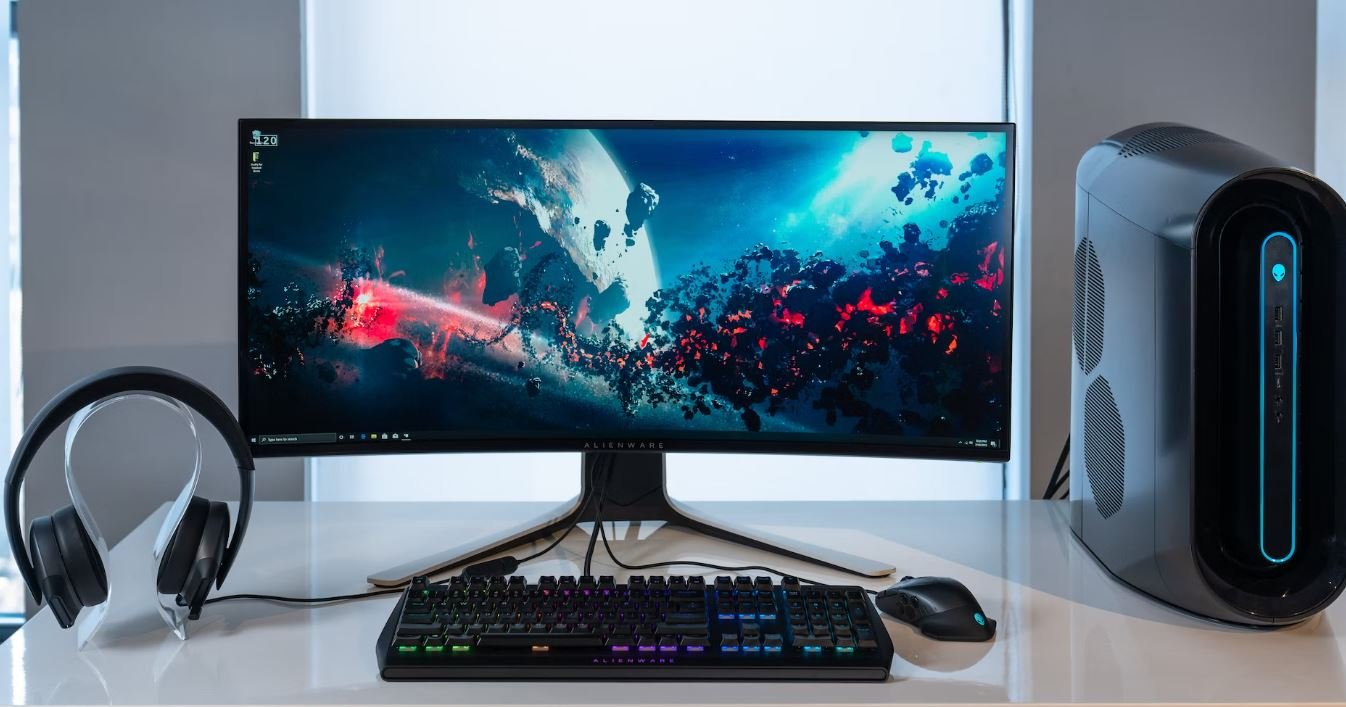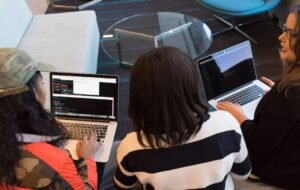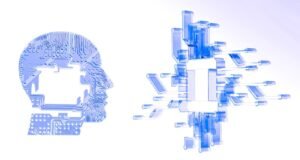Generative Art Tool
Generative art, also known as algorithmic art or computer-generated art, is a form of creative expression that uses specialized tools and algorithms to generate unique and unexpected visual creations. With the advent of technology, artists and designers now have access to powerful generative art tools that allow them to explore new artistic possibilities. In this article, we will explore the concept of generative art and discuss some of the popular generative art tools available today.
Key Takeaways:
- Generative art tools use algorithms to generate unique and unexpected visual creations.
- Generative art promotes creative exploration and experimentation.
- Popular generative art tools include Processing, OpenFrameworks, and NodeBox.
- Generative art can be used in various industries, including design, advertising, and entertainment.
Generative art is a fascinating discipline that blurs the boundaries between art and technology. It is based on the idea of creating artwork that is generated by a set of rules or algorithms, rather than being directly crafted by an artist’s hand. This approach allows for an infinite number of possibilities, as the algorithms can create unique and unexpected results each time they are run. Generative art tools provide artists with a platform to explore these possibilities and push the boundaries of their creativity.
*Generative art tools use algorithms to generate *unique and unexpected* visual creations.
Popular Generative Art Tools
1. Processing: Processing is a flexible software sketchbook and a language for learning how to code within the context of the visual arts.
2. OpenFrameworks: OpenFrameworks is an open-source toolkit designed to assist the creative process by providing a simple and intuitive framework for experimentation.
3. NodeBox: NodeBox is a powerful generative design application that lets artists create complex visual designs using simple Python scripts.
*Generative art promotes *creative exploration and experimentation*.
Generative art has found applications in various industries, including design, advertising, and entertainment. Designers use generative art tools to create compelling and unique visual assets for websites, logos, and advertisements. Advertisers leverage generative art to create dynamic and eye-catching visuals that capture the attention of their target audience. In the entertainment industry, generative art tools are used to produce stunning visual effects for movies, video games, and virtual reality experiences. The versatility of generative art tools makes them a valuable asset in creative industries.
Applications of Generative Art
| Industry | Applications |
|---|---|
| Design | Website design, logo creation, graphic design |
| Advertising | Visual assets, interactive campaigns, dynamic advertisements |
| Entertainment | Visual effects, video game graphics, virtual reality experiences |
*Popular generative art tools include *Processing*, *OpenFrameworks*, and *NodeBox*.
Generative art can be further enhanced by combining it with other technologies such as machine learning and virtual reality. Machine learning algorithms can be used to train models that generate art based on specific criteria or learn from existing artwork styles. Virtual reality technology can provide immersive and interactive experiences for viewers, allowing them to actively engage with generative art creations.
*Generative art can be used in various *industries*, including *design*, *advertising*, and *entertainment*.
Advancements in Generative Art
Table showing advancements in generative art:
| Advancement | Description |
|---|---|
| Machine Learning Integration | Combining generative art with machine learning algorithms to create unique and intelligent art forms. |
| Virtual Reality Integration | Using virtual reality technology to provide immersive experiences with generative art. |
| Real-time Generation | Generating art in real-time, allowing for interactive and dynamic experiences. |
*The versatility of generative art makes it a valuable asset in *creative industries*.
In conclusion, generative art is an exciting and rapidly evolving field that offers endless possibilities for artistic exploration. With the help of powerful generative art tools like Processing, OpenFrameworks, and NodeBox, artists and designers can unleash their creativity and push the boundaries of visual expression. Whether it’s creating unique graphic designs, crafting captivating advertisements, or producing stunning visual effects, generative art has the potential to revolutionize the way we perceive and interact with art.

Common Misconceptions
Misconception 1: Generative art is just random patterns
One common misconception about generative art is that it is simply a random arrangement of patterns or shapes. However, generative art is not solely based on randomness. It involves algorithms and rules that guide the creation of unique and complex compositions.
- Generative art utilizes algorithms and rules to generate patterns.
- There is a deliberate design process involved in creating generative art.
- The artist has control over various parameters that influence the outcome of the artwork.
Misconception 2: Generative art cannot be considered true art
Another misconception is that generative art is not considered a valid form of art. However, just like any other art form, generative art involves creativity, expression, and skill. It requires knowledge of programming and a deep understanding of aesthetics.
- Generative art involves the application of artistic intent and vision.
- It challenges traditional notions of authorship and creativity.
- Many renowned artists have embraced generative art as a legitimate form of artistic expression.
Misconception 3: Generative art tools require advanced programming skills
Some people believe that creating generative art requires extensive programming knowledge and skills. While programming can certainly enhance the possibilities, modern generative art tools offer user-friendly interfaces and require little to no programming experience.
- Generative art tools often provide a visual interface for creating artwork without coding.
- Users can customize various parameters and settings to achieve desired results without writing code.
- There are many beginner-friendly tutorials and resources available for learning generative art creation.
Misconception 4: Generative art is only made by computers
Another misconception is that generative art can only be created using computers. While computers and algorithms play a significant role, generative art can also be produced through traditional mediums such as painting, sculpture, or printmaking, utilizing manual techniques.
- Generative art can combine digital and analog techniques to create hybrid art forms.
- Artists can use generative concepts to inspire and guide their traditional art creation process.
- Hand-crafted generative art pieces showcase the fusion of computational and artistic skills.
Misconception 5: Generative art lacks meaning and intention
Some people believe that generative art lacks meaning or intention since it is generated by algorithms. However, artists who work with generative art often infuse their pieces with personal narratives, emotions, and concepts. The algorithm becomes a tool through which their vision is expressed.
- Generative artists use algorithms as a means to explore complex ideas and themes.
- The process of creating generative art can be deeply reflective and introspective.
- Generative art often blurs the boundaries between organic and artificial, challenging viewers’ perceptions.

Art has always been a significant outlet for human expression, enabling us to visually communicate emotions, ideas, and perspectives. With the advancement of technology, artists have gained access to powerful tools that amplify their creative abilities, leading to the birth of generative art. This unique art form leverages algorithms and computational processes to produce aesthetically captivating and thought-provoking pieces. In this article, we will explore ten fascinating elements of generative art using informative and engaging tables.
Artistic Movements Influencing Generative Art
Generative art draws inspiration from various artistic movements throughout history. Here, we highlight some key movements that have influenced this evolving art form.
| Artistic Movement | Year | Characteristics |
|---|---|---|
| Surrealism | 1920s | Unconscious mind, dream-like imagery |
| Op art | 1960s | Optical illusions, geometric patterns |
| Cubism | 1907 | Multidimensional perspectives, fragmented forms |
Notable Generative Art Projects
Several groundbreaking projects have pushed the boundaries of generative art, showcasing its immense potential. Explore the realm of creativity with these notable examples.
| Project | Artist | Description |
|---|---|---|
| “A-Volve” | Christa Sommerer and Laurent Mignonneau | Interactive installation featuring artificial life forms |
| “The Sheep Market” | Aaron Koblin | 10,000 sheep drawings generated by humans on Amazon Mechanical Turk |
| “Dripping” Series | Jackson Pollock | Paintings created using action painting technique |
Data Sources for Generative Art
Generative artists often utilize diverse data sources to inform their creative processes. These sources contribute unique perspectives, resulting in visually captivating and conceptually rich artworks.
| Data Source | Type | Examples |
|---|---|---|
| Weather | Real-time information | Temperature, wind speed, precipitation |
| Genetic | Biological data | DNA sequences, gene expressions |
| Social Media | User-generated content | Texts, images, hashtags |
Generative Art Tools for Beginners
Interested in exploring generative art? These accessible tools provide a stepping stone for budding artists to dive into the world of generative creativity.
| Tool | Features | Platform |
|---|---|---|
| P5.js | JavaScript library, interactive visuals | Web |
| Processing | Highly versatile, community support | Desktop (Windows, Mac, Linux) |
| OpenFrameworks | C++ framework, multimedia applications | Multiplatform (Windows, Mac, Linux) |
Interactive Generative Art Installations
The blend of interactivity and generative art creates captivating experiences for viewers. These installations invite individuals to become an active part of the artwork.
| Installation | Artist | Description |
|---|---|---|
| “Rain Room” | rAndom International | Visitors can walk through a downpour without getting wet |
| “Depth Study” | Casey Reas | Interactive display of generative visuals reacting to viewers |
| “Sonic Runway” | Megan and Rick Prelinger | 700-foot tunnel of light that creates sound based on movement |
Generative Art’s Influence in Other Industries
The unique aesthetics and principles of generative art have transcended the art world, making an impact across several industries. Let’s explore how generative art influences these domains.
| Industry | Influence of Generative Art |
|---|---|
| Advertising | Dynamic, visually engaging campaigns |
| Architecture | Complex form generation, parametric design |
| Fashion | Pattern generation, algorithmic designs |
Generative Art and Machine Learning
The integration of generative art with machine learning techniques opens up innovative possibilities for artistic creation. Here, we identify specific applications of this exciting combination.
| Application | Description |
|---|---|
| Style Transfer | Transforming artworks to mimic the styles of renowned artists |
| Neural Networks | Using neural networks to generate novel artwork based on training data |
| Image Classification | Generating art from the analysis of image features |
Generative Art Exhibitions
Generative art has found its place in numerous prestigious exhibitions worldwide, allowing viewers to appreciate the beauty and conceptual depth of this art form.
| Exhibition | Location | Date |
|---|---|---|
| “Hello, World!” | Barbican Centre, London | 2017 |
| “Aesthetic Computation” | MIT Media Lab, Massachusetts | 2019 |
| “Generative Arts Exhibition” | National Taiwan University of Arts, New Taipei City | 2020 |
Generative Art in Social Commentary
Generative art is often utilized to convey powerful messages and stimulate discussions around societal issues. These thought-provoking artworks merge creativity with critical analysis.
| Artwork | Artist | Message |
|---|---|---|
| “When Will You Marry?” | Robbie Barrat | Explores societal attitudes towards relationships |
| “Welcome to the Desert of the Real” | Marius Watz | Examines the inherent contradictions of our digital reality |
| “I Could Only Paint When I Was Alone” | Anna Ridler | Addresses loneliness and social connection in the digital age |
Conclusion
Generative art is an ever-evolving realm that continues to push the boundaries of creativity. By embracing technology and incorporating algorithmic processes, artists create art with a unique blend of randomness and intention. From interactive installations to social commentary, generative art impacts various industries and provokes new ways of thinking. As artists and enthusiasts delve deeper into this world, generative art is poised to inspire and challenge our perceptions of artistic expression.
Frequently Asked Questions
Question 1:
What is generative art?
Generative art refers to artwork that is created through a process that involves algorithms, mathematics, or other rule-based techniques. It often involves randomness and is created by an art-producing system rather than directly by the artist.
Question 2:
How can a generative art tool be useful?
A generative art tool can be useful for artists and designers who want to explore new creative possibilities, automate art creation, or generate unique and complex patterns that would be difficult to create manually. It can also serve as a source of inspiration and a way to discover unexpected visual outcomes.
Question 3:
What are some common features of generative art tools?
Some common features of generative art tools include the ability to define algorithms or rules for generating patterns, options to adjust parameters and variables, support for different artistic styles and techniques, and the possibility to export or save the generated artwork in various formats.
Question 4:
Can generative art tools be used by non-artists?
Yes, generative art tools can be used by non-artists as well. These tools often provide user-friendly interfaces and simplified controls, making it accessible for individuals without prior artistic experience to create visually intriguing and unique artwork.
Question 5:
Are generative art tools suitable for professional artists?
Absolutely! Many professional artists incorporate generative art tools into their creative process to explore new ideas, experiment with different techniques, or generate preliminary designs. These tools can enhance the workflow and provide new avenues for artistic expression.
Question 6:
Is generative art only digital?
While generative art is often associated with digital creations, it is not limited to the digital medium alone. Generative art can also be manifested in physical forms, such as sculptures, installations, or even printed artworks.
Question 7:
Can generative art tools be used collaboratively?
Yes, many generative art tools support collaboration among multiple users. These tools often allow artists to work together on a project in real-time, share their algorithms or variables, and exchange ideas, fostering a collaborative and interactive artistic experience.
Question 8:
Are generative art tools accessible for individuals with disabilities?
Efforts are being made to ensure that generative art tools are accessible to individuals with disabilities. Accessibility features such as keyboard navigation, screen reader compatibility, and adjustable color contrasts are being incorporated into many tools to make them more inclusive and usable by a wider audience.
Question 9:
Can generative art tools be used for educational purposes?
Yes, generative art tools can be valuable educational resources. They can help teach principles of mathematics, programming, and aesthetics, encourage creativity, and provide a platform for students to explore the intersection of art and technology.
Question 10:
Are there any legal considerations when using generative art tools?
When using generative art tools, it is important to consider copyright and intellectual property laws. Artists should ensure they have the necessary rights or licenses for any resources used within their generative artwork and be mindful of any restrictions placed on the distribution or commercial use of the generated output.




